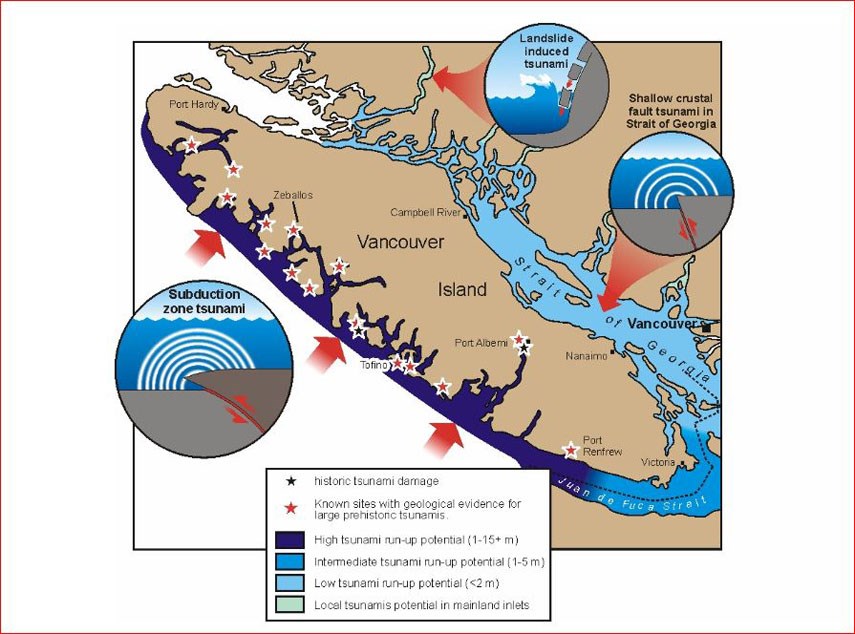Like other emergency managers around the south coast, Fiona Dercole, the North Shore’s emergency management director, got a sudden awakening at 1:30 a.m. Tuesday by an automated phone message, telling her a tsunami warning had been issued for parts of coastal B.C.
Luckily, the North Shore was never part of that tsunami warning – and likely never will be.
“We’re largely protected by Vancouver Island,” said Dercole.
Even in the event that a real tsunami hits the west coast of Vancouver Island, “Any waves that might be generated would be dissipated by the time they reach Georgia Strait,” she said.
The tsunami warning came after an earthquake with a reported magnitude of 8 struck southeast of Kodiak, Alaska. The warning included people living in communities on western Vancouver Island, as well as fronting Juan de Fuca Strait at the south tip of the island, the northeast tip of the island, the north coast of B.C. and Haida Gwaii. Beach sirens in those communities warned residents to evacuate inland or to seek higher ground. All warnings were called off three hours later.
Dercole said the alerts and response of people in areas like Tofino showed the early warning system is working. It’s also a reminder for locals to sign up for the Emergency Management Office’s “rapid notify” system, said Dercole, which sends out automatic phone calls, texts and emails in the event of an emergency. In the U.S., different laws have allowed local emergency planners to push notifications to people’s phones even without their express permission in the event of an emergency. That’s what recently happened in Hawaii, when residents and tourists all received an erroneous warning of an incoming missile attack.
It’s possible that Canada will change its regulations to allow similar notifications in future, Dercole added.
In terms of any future tsunami risk, however, North Shore residents can likely rest easy. A study on tsunami risks for the North Shore conducted in 2005 showed there have never been any geological deposits indicating past tsunamis here, despite historical earthquakes. According to computer modelling, North and West Vancouver shorelines could see waves one to two metres high, about two hours after a very large earthquake. In that situation, some infrastructure in low-lying shoreline areas like the West Vancouver Seawalk, local marinas, wharves and the SeaBus terminal could be damaged, according to the report, but nobody’s life would be endangered.
A much more significant threat still exists from earthquakes, which are notoriously difficult to predict.



